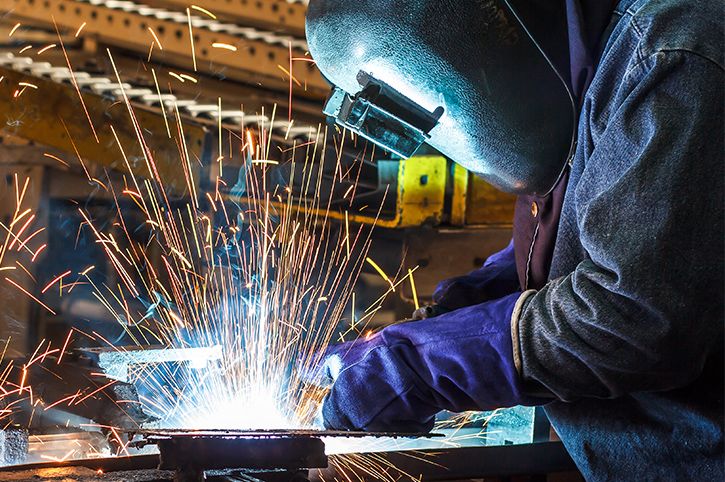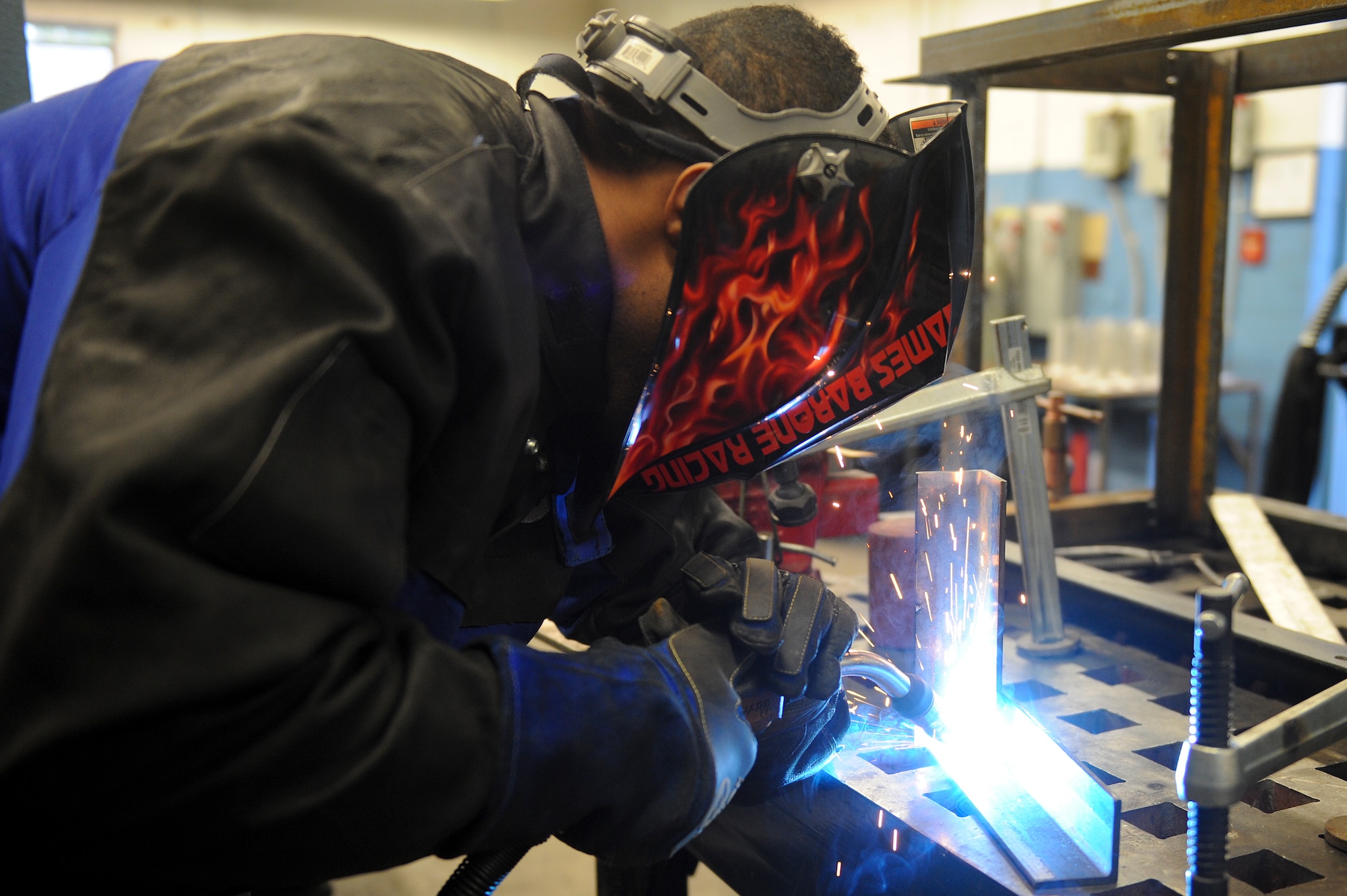Typical Welding Repair Issues and Exactly How to Address Them Effectively
Welding fixings often encounter a series of concerns that can endanger the integrity of the end product. Common problems consist of insufficient penetration, porosity, and imbalance, among others. Each defect provides one-of-a-kind obstacles that call for particular strategies for resolution. Understanding these issues is necessary for welders aiming to enhance their results and skills. This discussion will explore these usual welding fixing concerns and efficient approaches to resolve them.
Insufficient Infiltration
Inadequate infiltration takes place when the weld steel fails to totally fuse with the base material, leading to weak joints and potential structural failings. This issue usually comes from inadequate warmth input, wrong electrode angle, or incorrect welding speed. Welders may experience inadequate penetration as a result of a mistake of the necessary specifications for a particular material density or type. In addition, contamination on the base product's surface area can hinder efficient bonding, aggravating the issue. To deal with insufficient infiltration, welders ought to assure suitable setups on their equipment and preserve a tidy job surface. Routine examination of welds is suggested to recognize any type of shortages early, permitting prompt improvements and the avoidance of jeopardized architectural stability in bonded settings up.
Porosity
Porosity is a common issue in bonded joints that manifests as tiny gas bubbles entraped within the weld metal. This issue can compromise the stability of the weld, leading to reduced stamina and prospective failing under tension. Fabrication. Porosity generally occurs from contamination, wetness, or incorrect welding techniques, which permit gases to leave into the liquified weld swimming pool. To attend to porosity, welders should guarantee correct surface prep work, maintain a clean functioning atmosphere, and make use of appropriate welding parameters. In addition, picking the ideal filler product and protecting gas can alleviate gas entrapment. Routine assessment and testing of welds can help determine porosity early, guaranteeing prompt corrective activities are taken, therefore maintaining the high quality and dependability of the welded structure
Misalignment
Imbalance in welding can arise from different variables, consisting of inappropriate setup and thermal expansion. Understanding the origin is crucial for reliable resolution. Numerous adjustment techniques are offered to straighten components and assure structural honesty.
Root causes of Misalignment
Welding imbalance typically comes from a variety of underlying concerns that can jeopardize structural integrity. One primary reason is inappropriate fit-up of parts before welding, which can cause voids and unequal surface areas. Variations in thermal growth during the welding procedure can additionally result in distortion, especially if the materials being signed up with have different coefficients of expansion. Additionally, insufficient securing and fixturing might stop working to hold parts safely in area, causing activity during welding. Improperly kept devices, consisting of welding devices and devices, might present variances in the weld grain, further adding to imbalance. Driver mistake, stemming from insufficient training or experience, can also play a substantial function in creating misaligned welds.

Improvement Strategies Readily Available
Attending to misalignment successfully requires a mix of restorative techniques tailored to the particular issues handy. One usual approach is using components or jigs to hold parts in the appropriate position during welding, guaranteeing consistent placement. Additionally, preheating the products can help in reducing distortion and improve fit-up. For considerable misalignment, mechanical adjustment techniques, such as utilizing hydraulic jacks or clamps, can be used to correct the position before welding. Post-weld heat therapy might additionally be needed to alleviate stress and anxieties brought on by imbalance. Ultimately, careful examination and adjustment during the arrangement stage can stop imbalance issues from ending up being substantial issues, promoting a smoother welding process and boosting overall structural honesty.
Distortion
Distortion is a typical obstacle in welding that can emerge from various elements, including irregular heating & cooling. Comprehending the root causes of distortion is necessary for carrying out effective avoidance techniques. Addressing this issue not just enhances structural honesty however also enhances the overall quality of the weld.
Causes of Distortion
When based on the intense heat of welding, products frequently undergo modifications that can lead to distortion. This sensation mainly occurs from thermal development and contraction during the welding process. As the weld area warms up, the product increases; upon cooling, it contracts, which can produce inner tensions. Additionally, uneven home heating throughout a work surface can worsen these stresses, leading to warping or bending. The kind of material also plays a considerable duty; metals with differing thermal conductivity and coefficients of expansion might respond in different ways, causing unforeseeable distortions. Poor joint layout and inadequate fixturing can contribute to imbalance throughout welding, increasing the probability of distortion. Recognizing these reasons is crucial for effective welding repair and prevention techniques.
Prevention Techniques
Efficient prevention methods for distortion during welding concentrate on regulating heat input and guaranteeing proper joint style. Preserving a regular heat input aids to reduce thermal growth and contraction, which can bring about distortion. Using strategies such as pre-heating the workpiece can also lower the temperature level slope, promoting uniform heating. Furthermore, choosing ideal joint styles, such as T-joints or lap joints, can enhance stability and lower stress focus. Carrying out appropriate fixturing to protect the workpieces in position even more aids in maintaining alignment throughout the welding procedure. Finally, staggered welding series can disperse warm a lot more uniformly, stopping localized distortion. By using these approaches, welders can considerably reduce the possibility of distortion and improve the general quality of their welds.
Cracking
Cracking is an usual concern come across in welding repairs, frequently arising from numerous factors such as inappropriate cooling rates, product selection, or inadequate joint prep work. The incident of splits can greatly endanger the stability of the weld, resulting in potential failures during operation. To resolve this problem, welders this website have to initially analyze the origin causes, ensuring that products are suitable and appropriately selected for the specific application. Furthermore, controlling the cooling price during the welding procedure is vital; quick air conditioning can induce anxiety and bring about fracturing. Appropriate joint style and preparation also add to decreasing the risk. Applying these approaches can enhance weld quality and longevity, eventually lowering the probability of cracking in ended up weldments.

Insufficient Fusion
A substantial issue in welding fixings is insufficient blend, which happens when the weld steel does not effectively bond with the base product or previous weld passes - Montana Mobile Welding and Repair Belgrade Fabrication. This problem can bring about weaknesses in the joint, potentially endangering the stability of the bonded structure. Factors adding to incomplete combination include inadequate warmth input, improper welding method, and contamination of the surface areas being joined. To resolve this concern properly, welders should ensure correct pre-weld cleansing and surface prep work, along with adjust their welding criteria to accomplish adequate penetration and combination. Normal examination during the welding process can likewise assist determine incomplete combination early, permitting prompt corrective measures to enhance the total top quality of the weld
Overheating
While welding repair services can boost structural honesty, overheating offers a considerable difficulty that check my site can lead to product destruction. Too much heat during welding can alter the mechanical homes of steels, leading to lowered stamina, increased brittleness, and bending. This phenomenon is specifically crucial in high-stress applications where structural integrity is vital. Determining getting too hot can include visual assessments for staining or distortion, as well as monitoring temperature during the welding procedure. To reduce the risks linked with getting too hot, welders need to employ ideal techniques, such as managing warm input, adjusting travel speed, and making use of appropriate filler materials. Additionally, applying pre- and post-weld warm therapies can help restore product homes and boost the overall top quality of the repair service, guaranteeing long-lasting performance and safety.
Frequently Asked Concerns
What Are the Usual Signs of a Welding Flaw?

Just How Can I Check My Welds for High quality?
To evaluate welds for high quality, one can utilize aesthetic inspections, ultrasonic testing, and click here for info radiographic methods. Each technique assures structural honesty, recognizes flaws, and confirms adherence to specified requirements, eventually improving the integrity of the welded joints.
What Safety and security Preventative Measures Should I Take While Welding?
When welding, one ought to prioritize security by using appropriate individual protective equipment, making certain appropriate air flow, securing flammable products away, keeping a clean workspace, and being conscious of environments to protect against injuries and crashes.
Can I Fix a Weld Without Redoing the Entire Joint?
Repairing a weld without renovating the whole joint is feasible, relying on the damages (Belgrade Fabrication). Strategies such as grinding, including filler material, or using a welding procedure can properly attend to particular defects while maintaining the surrounding structure
What Devices Are Essential for Efficient Welding Repair Works?
Necessary tools for reliable welding fixings include a welding maker, wire brush, mill, protective gear, clamps, and filler products. Each device plays a vital duty in making sure high quality and safety and security throughout the repair work process. Porosity generally emerges from contamination, dampness, or improper welding methods, which permit gases to run away right into the liquified weld pool. Poorly kept tools, including welding devices and devices, might present variances in the weld bead, additional contributing to misalignment. When subjected to the extreme heat of welding, materials frequently undertake adjustments that can lead to distortion. Cracking is a common concern come across in welding repair work, usually resulting from different factors such as incorrect air conditioning rates, material option, or inadequate joint preparation. A considerable issue in welding repair services is insufficient blend, which takes place when the weld metal does not sufficiently bond with the base product or previous weld passes.